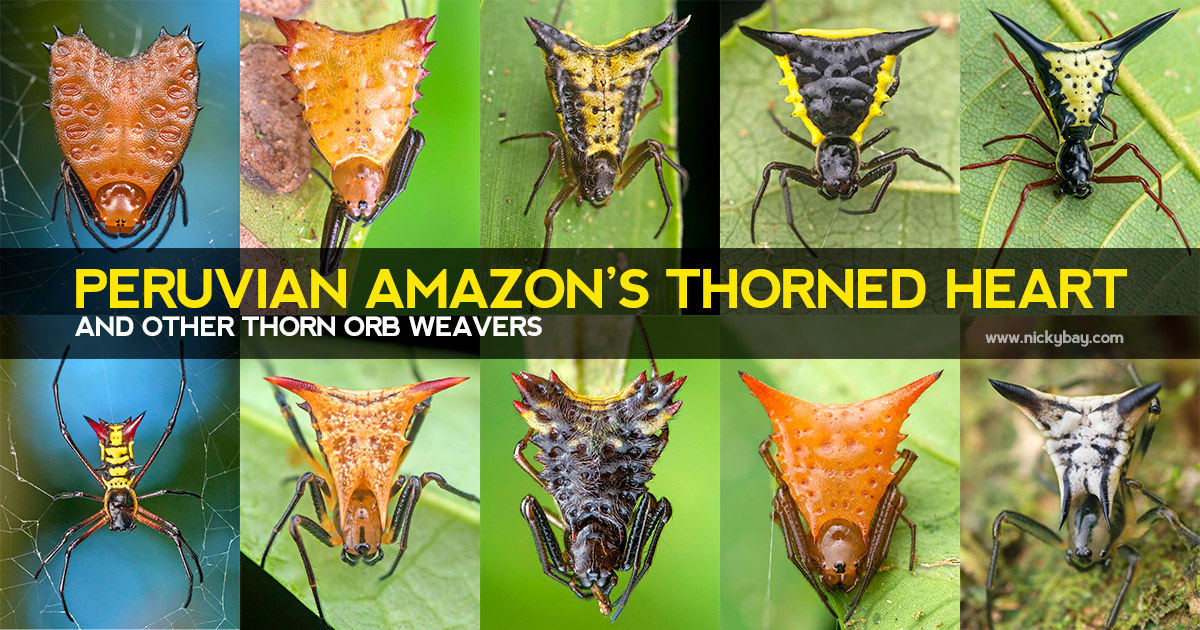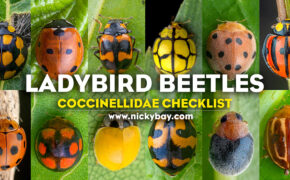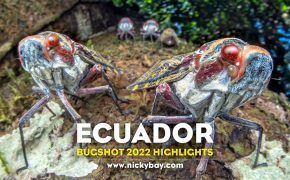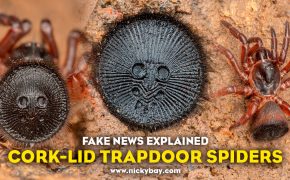More from the Peruvian Amazon
- Tortoise Orb Weavers
- Thorn Orb Weavers
- Roly Poly Orb Weavers
- Jewel Caterpillar
- Spider Faces
- 50 Tiny Creatures
In my recent week-long adventure into the Peruvian Amazon kindly made possible by Rainforest Expeditions, one genus of spiders stood out distinctly – Micrathena Sundevall, 1833. They were widespread, easily spotted, and morphologically fascinating. I hope the photos in this series will prove just that!
The Spiny Orb-Weaver Genera Micrathena and Chaetacis (Bulletin Museum of Comparative Zoology, Vol. 150, No. 8, pp. 429-618) by Herbert W. Levi proved to be a very good reference for this genus. Here are some easily visible characters of this genus. There are other characters to look out for, but those would probably require examination under a microscope.
Femora IV always longer than femora I
Glabrous carapace (lacking fur) with the exception of Micrathena furcula, often with 1 to 3 pairs of dimples and a high thorax
At least 10 different identifiable species or species groups were spotted and photographed in the foliage, with some indeterminate as the specimens were not collected. Special thanks to Pedro H. Martins for his kind help in identifying the spiders!
Micrathena acuta (Walckenaer, 1841)
Micrathena clypeata (Walckenaer, 1805)
Micrathena cornuta (Taczanowski, 1873)
Micrathena excavata (C. L. Koch, 1836)
Micrathena kirbyi (Perty, 1833)
Micrathena plana (C. L. Koch, 1836)
Micrathena pungens (Walckenaer, 1841)
Micrathena schreibersi (Perty, 1833)
Micrathena triangularis (C. L. Koch, 1836)
Micrathena triangularispinosa (De Geer, 1778)
Thorned heart orb weaver (Micrathena clypeata) ♀
One of the most common and easily recognizable species of Micrathena, M. clypeata is shaped like a red heart. The carapace has 3 pairs of dimples and a circular thoracic depression. Dorsum of abdomen is flat with sclerotized discs, has 3 thorns posteriorly on each side, and 1 on each lateral margin.
Thorned heart orb weaver (Micrathena clypeata) ♀
As these orb weavers are diurnal, most were spotted in the day. Here’s a shot of it rushing towards a freshly caught bee on the web.
Thorned heart orb weaver (Micrathena clypeata) ♀
It perches over an opening in the middle of the orb web, allowing it to move quickly to either side of the web.
Thorned heart orb weaver (Micrathena clypeata) ♀
Better view of the eye arrangement.
Thorned heart orb weaver (Micrathena clypeata) ♀
Lateral view shows just how thin the abdomen can be.
Thorned heart orb weaver (Micrathena clypeata) ♀
The thin abdomen allowed light to pass through from behind. Little patches of the blue sky can be seen through the foliage in the background.
Thorned heart orb weaver (Micrathena clypeata) ♀
How it looks when it flips to the other side of the orb web.
Thorned heart orb weaver (Micrathena clypeata) ♂
The corresponding male, much smaller and sexually dimorphic.
Thorn orb weaver (Micrathena gr. cornuta) ♀
This relatively small species may build interesting patches of stabilimenta on its web. Their purpose is not certain, perhaps to confuse potential predators?
Thorn orb weaver (Micrathena gr. cornuta) ♀
Closer view of Micrathena gr. cornuta.
Thorn orb weaver (Micrathena excavata) ♀
Micrathena excavata sports an orange carapace, light orange dorsal abdomen with 3 pairs of lateral spines, a large pair of black posterolateral spines and a lighter pair of spines in between. Carapace lacks dimples or rim, with a high thorax. This specimen does not exhibit the different tones of the spines, and could be immature.Thorn orb weaver (Micrathena kirbyi) ♀
Micrathena kirbyi is one of the more boldly coloured species of Micrathena. The carapace is rimmed with a round thoracic mark and high thorax, and sides of abdomen almost parallel with 10 spines. The legs are black-brown except for the coxae and femora which are orange, graduating towards black at the end of the femora.Thorn orb weaver (Micrathena kirbyi) ♀
Lateral view shows the high thorax.
Thorn orb weaver (Micrathena kirbyi) ♀
PornographicVentral view shows 2 light spots on each side of the spinnerets, and a median light spot behind.Thorn orb weaver (Micrathena cf. plana) ♀
This Micrathena has dark bands on each side of the dorsal surface of the abdomen, with 2 anterior spines, 2 thorns on each side with a swelling in between (not obvious in photo) and a posterolateral spine on each side with 3 tips – middle tip the largest.
Thorn orb weaver (Micrathena gr. plana) ♀
Probably an immature specimen in this group.
Thorn orb weaver (Micrathena pungens) ♀
Micrathena pungens is probably the most common Micrathena spotted on this trip, with easily over 10 specimens spotted along the trails. The carapace has 3 pairs of dimples, a circular thoracic mark and a light coloured rim. The abdomen has an anterior pair of spines overhanging the carapace, 3 pairs of lateral spines and a pair of large posterolateral black spines with a small anterior hump at the base.Thorn orb weaver (Micrathena pungens) ♂
Corresponding male of Micrathena pungens.
Thorn orb weaver (Micrathena schreibersi) ♀
Micrathena schreibersi has one of the longest posterolateral spines among all the Micrathena that I found. There are 4 pairs of black spines on the abdomen and a small pair of blunt spines overhanging the abdomen. The carapace has a yellow rim, an anterior pair of dimples and distinct pairs of grooves radiating from the circular thoracic depression.Thorn orb weaver (Micrathena schreibersi) ♀
Lateral view shows the posterior pair of spines.
Thorn orb weaver (Micrathena gr. triangularispinosa) ♀
The triangularispinosa group is characterized by a shiny dome-shaped carapace with an indistinct thoracic mark. The abdomen is sub-triangular, with a large anterior pair of spines overhanging the carapace and a large pair of dorsal posterior spines. There are usually small lateral spines in between, and sometimes a small pair of posterior spines.
Thorn orb weaver (Micrathena gr. triangularispinosa) ♀
Lateral view shows the dome-shaped carapace.
Thorn orb weaver (Micrathena cf. triangularis) ♀
The carapace and abdomen of Micrathena triangularis is brownish-black. The carapace has 1 pair of dimples and thorax very high. Abdomen is trapezoidal with 14 to 16 spines.
Thorn orb weaver (Micrathena cf. triangularis) ♀
Posterior view shows how the rear spines are positioned.
Thorn orb weaver (Micrathena triangularis) ♀
Probably an immature specimen.
Thorn orb weaver (Micrathena gr. plana) ♀ – ID by Ivan Magalhães
This specimen looked close to Micrathena tziscao but it seems to have 4 pairs of small lateral spines while the description of M. tziscao has only 3 pairs of small lateral spines.
Thorn orb weaver (Micrathena gr. plana) ♀ – ID by Ivan Magalhães
Small posterior spines below the largest posterolateral spines.
Thorn orb weaver (Micrathena gr. plana) ♀ – ID by Ivan Magalhães
Micrathena tziscao has slightly larger posterior median eyes, but this trait does not look clear here.Thorn orb weaver (Micrathena sp.)
Most likely a juvenile Micrathena.
Thorn orb weaver (Micrathena sp.) ♀
Also an immature specimen of indeterminate species.
Thorn orb weaver (Micrathena acuta) ♀ – ID by Ivan Magalhães
Close match to Micrathena acuta but not certain on this!
Thorn orb weaver (Micrathena acuta) ♀ – ID by Ivan Magalhães
Possibly the same but more mature specimen of the above species.
Thorn orb weaver (Micrathena kirbyi) ♂ – ID by Ivan Magalhães
Probably an immature male of Micrathena kirbyi.
Thorn orb weaver (Micrathena clypeata) ♂ – ID by Ivan Magalhães
Most males are morphologically similar, and require examination of the palps. Most likely a subadult male Micrathena clypeata.
Thorn orb weaver (Micrathena clypeata) ♂ – ID by Ivan Magalhães
As no specimens were collected, identification was not certain.
Puerto Maldonado Airport
From Lima Airport, it would be a 3-hour flight to Puerto Maldonado including a stopover at Cusco, which is where most tourists end up if they wish to visit the famous Macchu Picchu.
Rainforest Expeditions Office
Just 10 minutes away from the airport, we could repack and leave part of our luggage at the Rainforest Expeditions office.
Bus to the Port
One hour on the bus to the river port! Our big bags would be strapped on top of the bus.
River Port
Doesn’t look much like a bustling port, but that’s our entrance to the Amazon!
River Boats
That’ll be where we spend the rest of the day in. 2.5 hours upstream towards Refugio Amazonas.
Food Porn
We had our meals on the boat, surprised to get Chinese food – Chow Fan (fried rice). Delicious! Feeling hungry just thinking about it…
Sunset
We were on the boat navigating through the meandering rivers til dusk.
Caiman
There was the occasional caiman lazing on the mud banks. It was easy to spot them from a distance by detecting their eye shine.
Refugio Amazonas
After the 2.5 hour boat ride, we spent the night in Refugio Amazonas where I did a short night macro shoot. This is the view of my room, has a nice hammock but I didn’t have time to laze in it!
Boat to TRC
The next morning had us on another boat for 5 hours. This chart shows the distance covered.
Amazonian River
5 hours along the winding rivers, and this was how it looked like on both sides most of the time.
Arrival at Tambopata
Had to fast forward. We spotted a number of avians, and troops of peccary (wild boars) but I just sat around sucking my thumb as I didn’t have any long lens with me.
Tambopata Research Center
I finally saw my bed sheets for the week ahead! But only for a brief moment before we trooped out to bench 3 to check out Jeff’s camera trap.
Panoramic View of the Amazon from Terra Firma
To close off, this is the view from one of the benches towards the camera trap. Shot with Canon G11. Click on the photo for a higher resolution view.



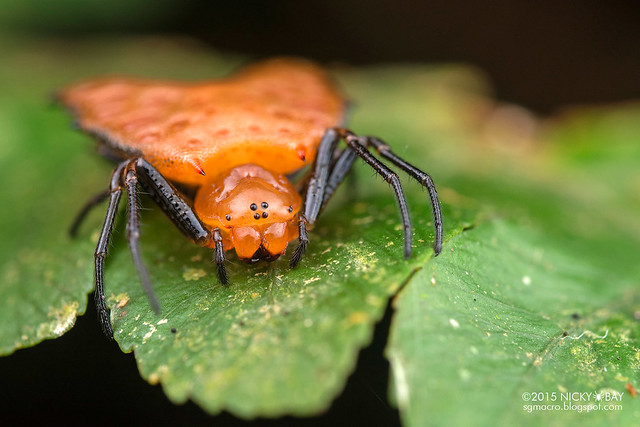

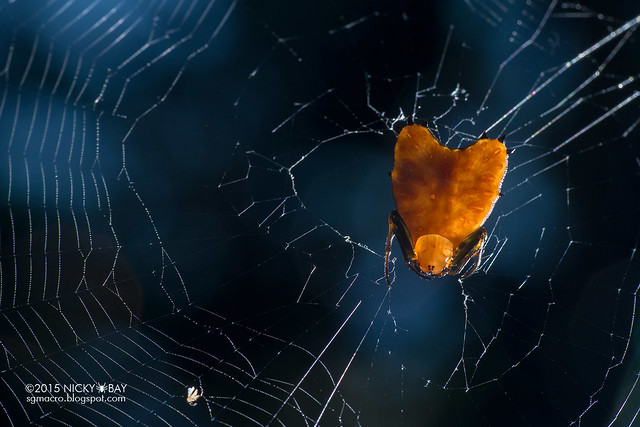
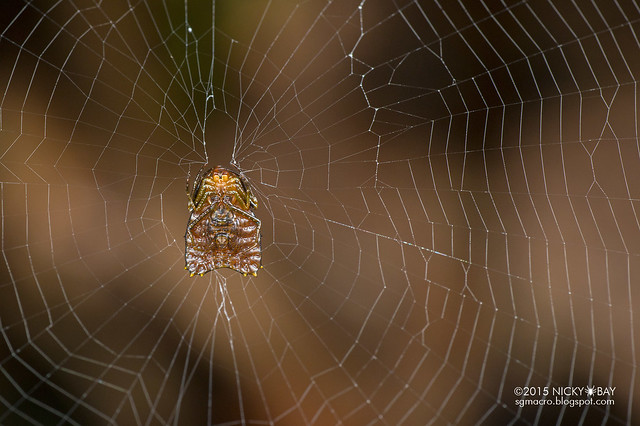
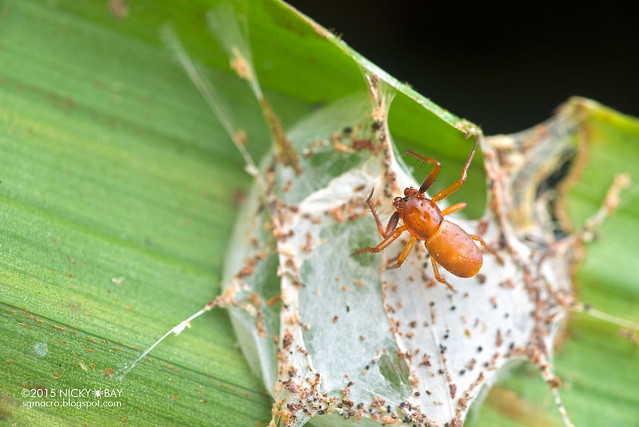

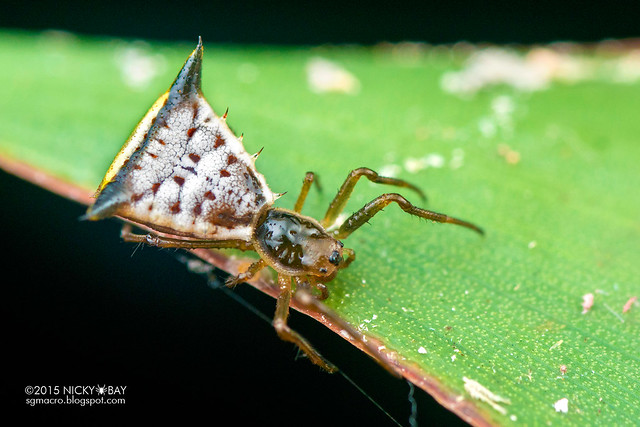
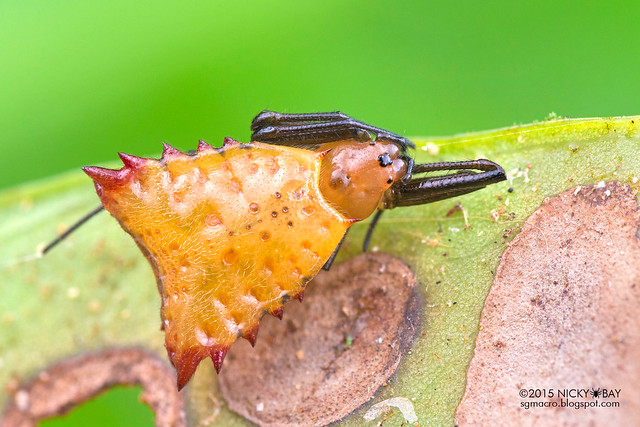
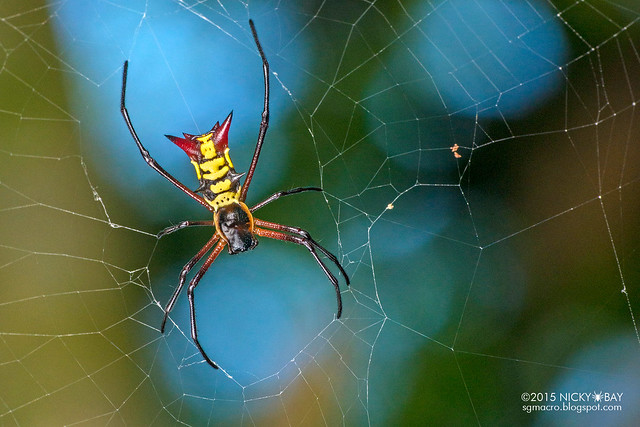
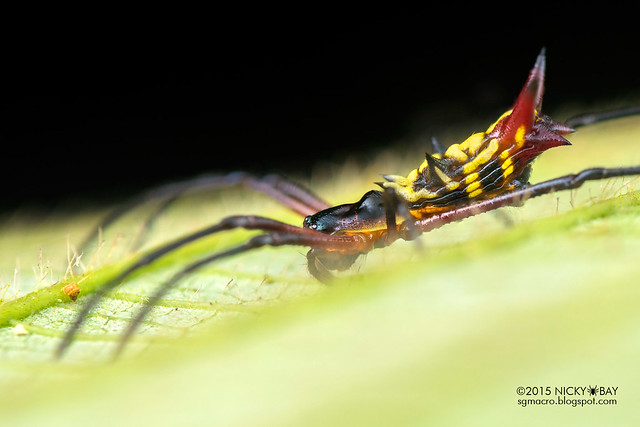
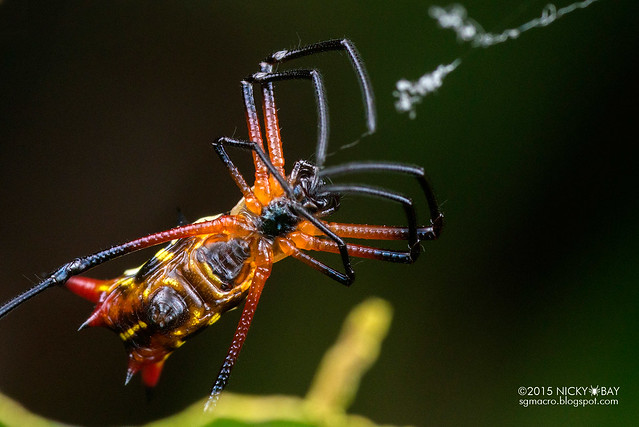
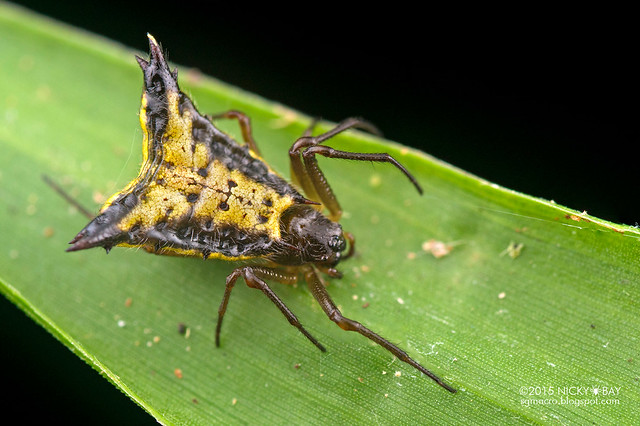
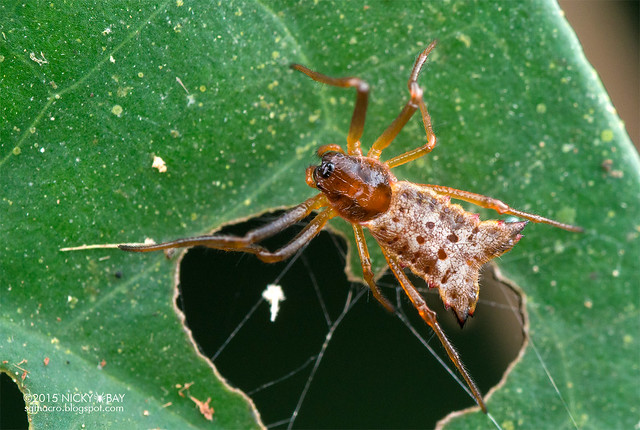
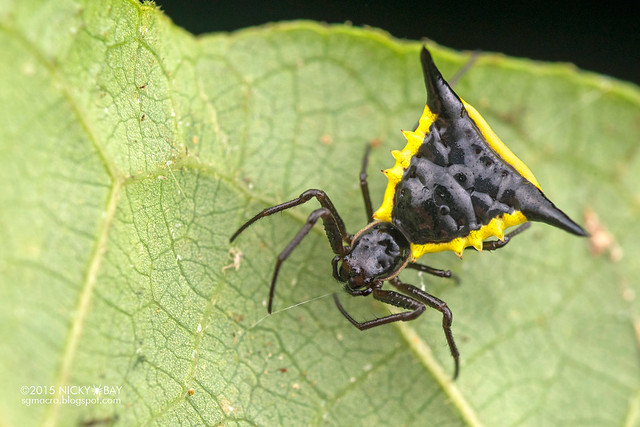
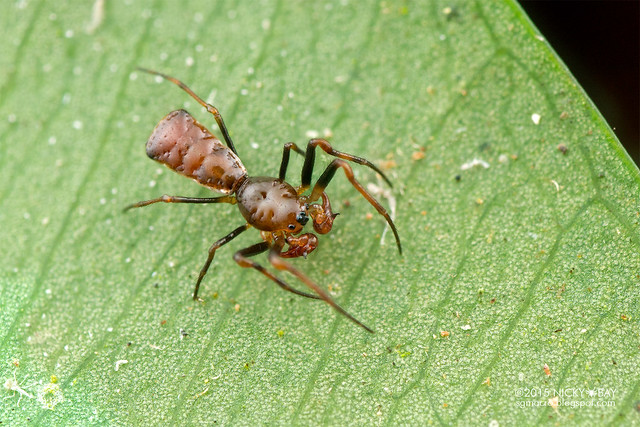
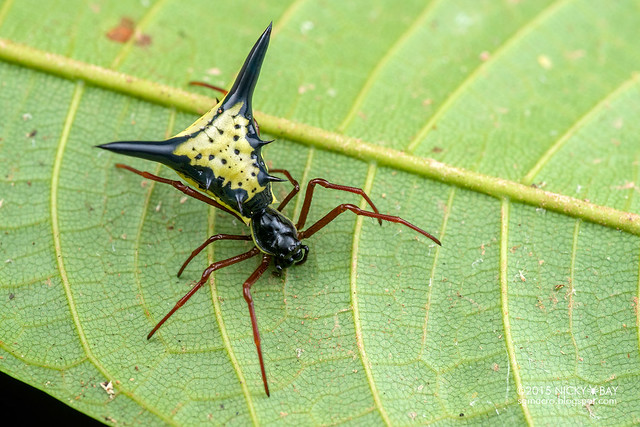
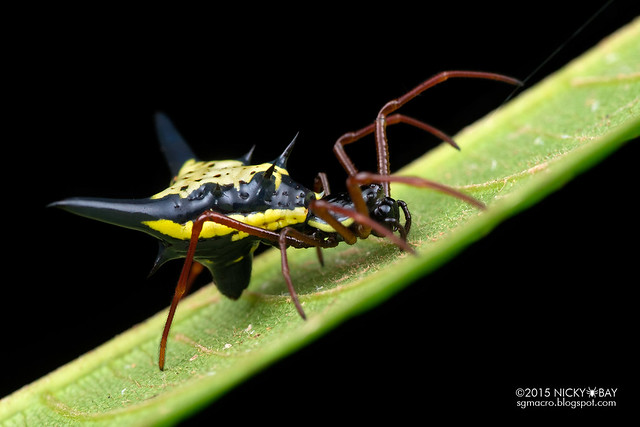
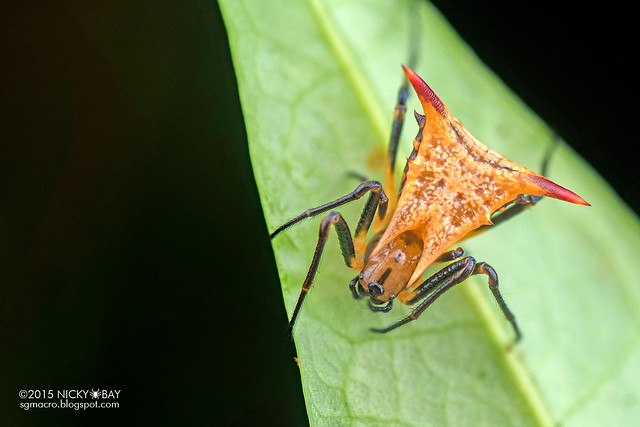
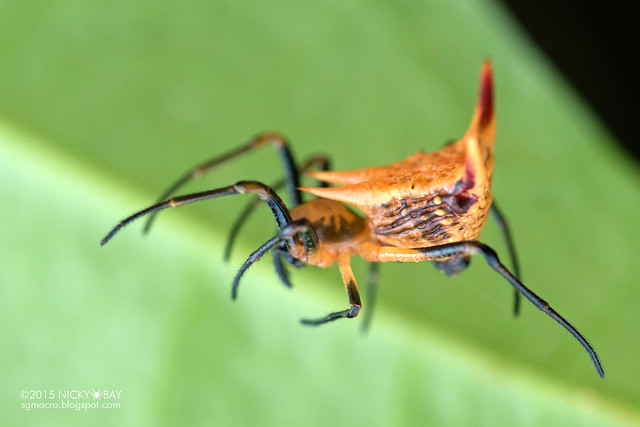
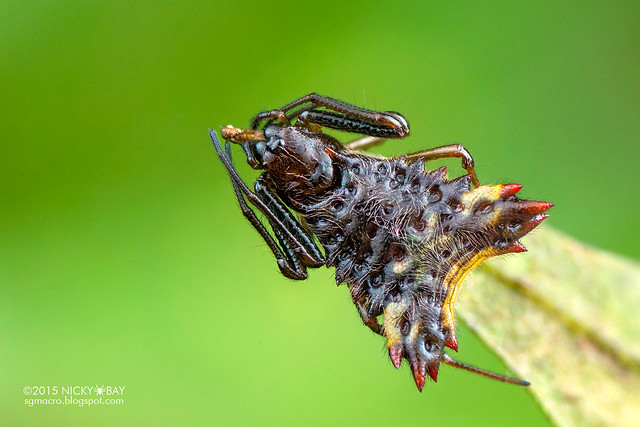
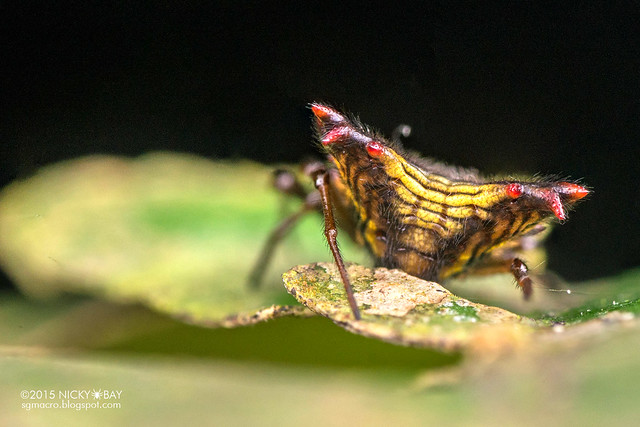
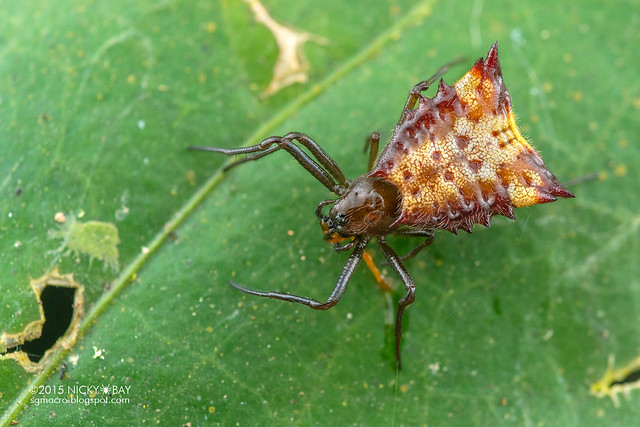
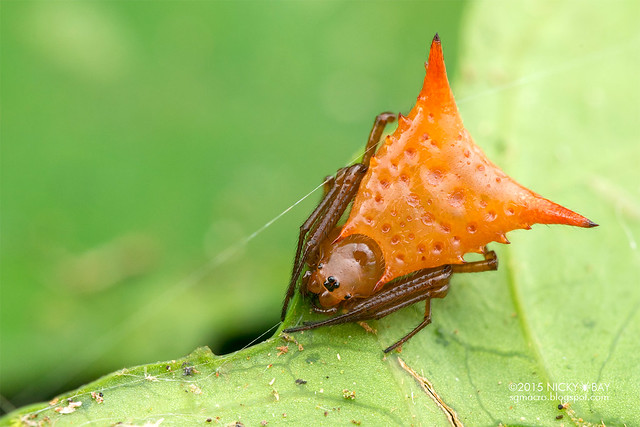
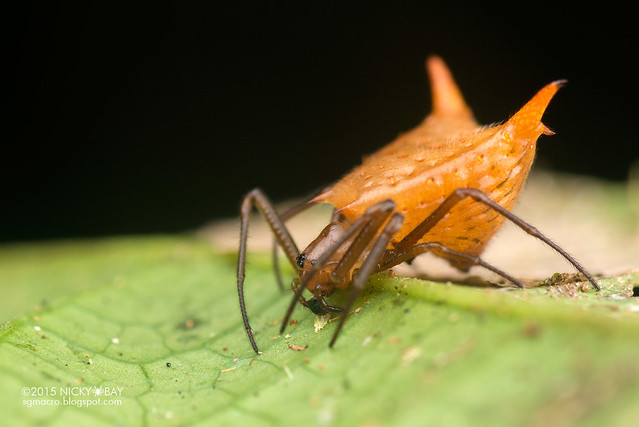
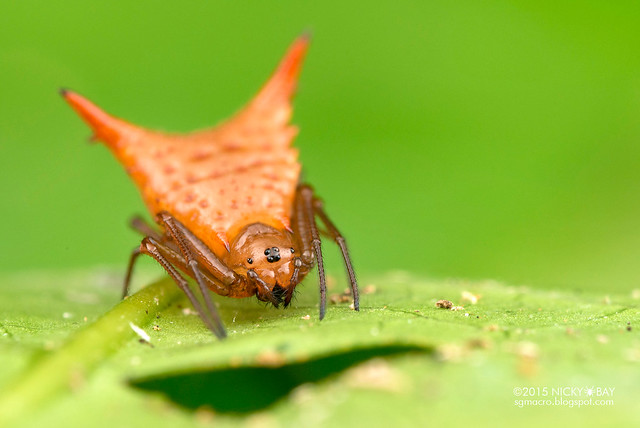
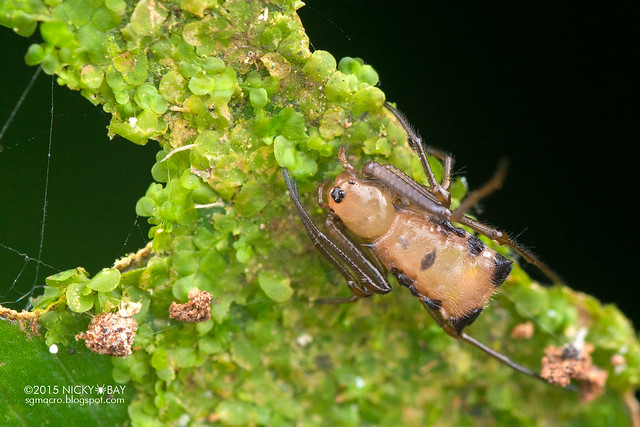
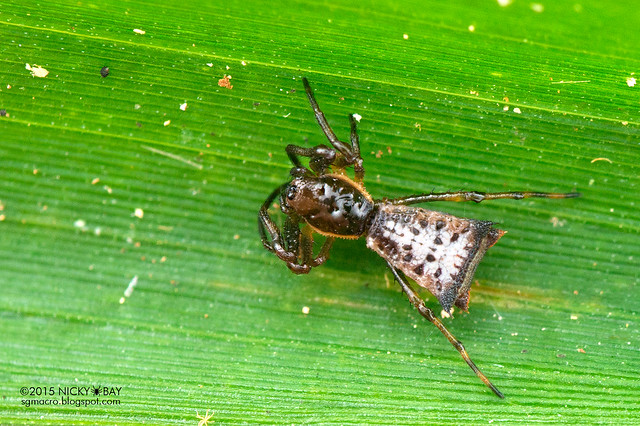
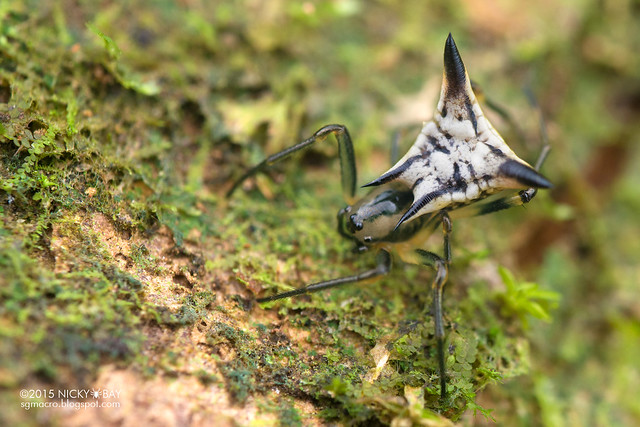
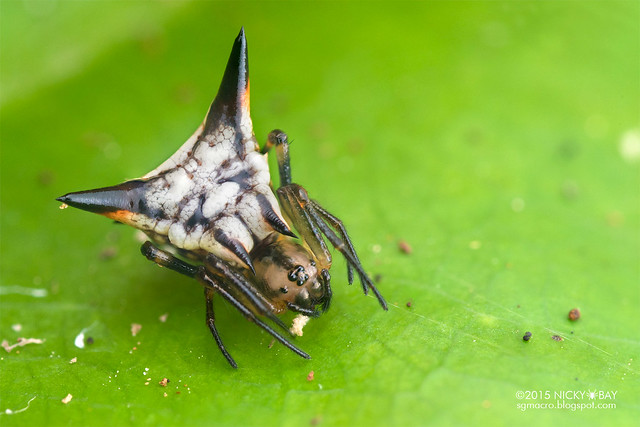
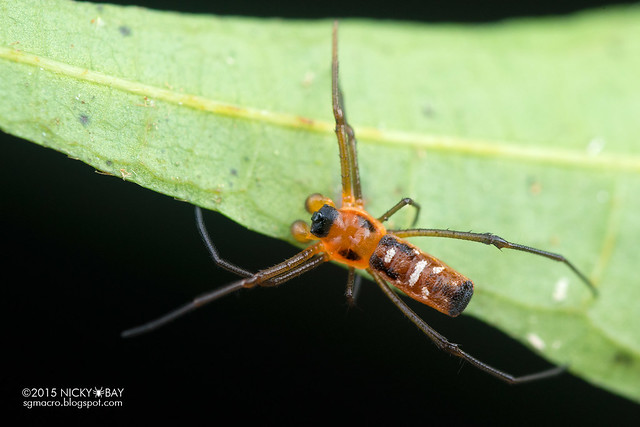
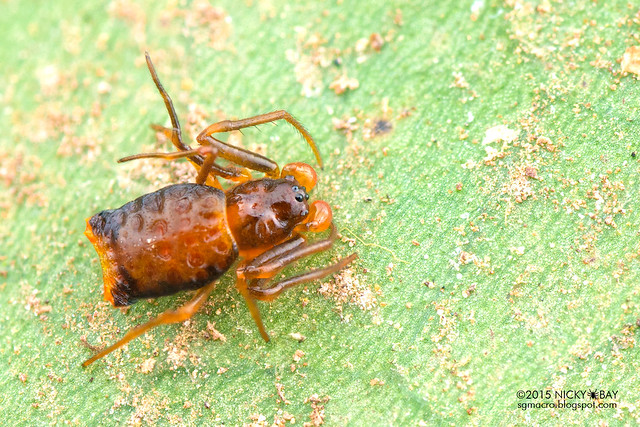

Many have been asking me how the journey to Tambopata Research Center was like, so here’s a quick summary.
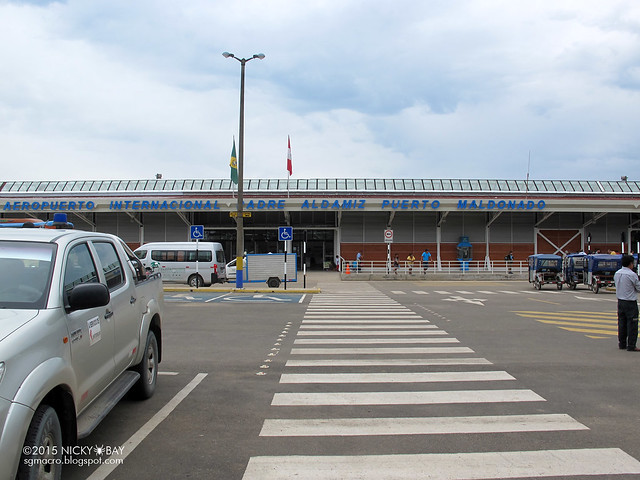
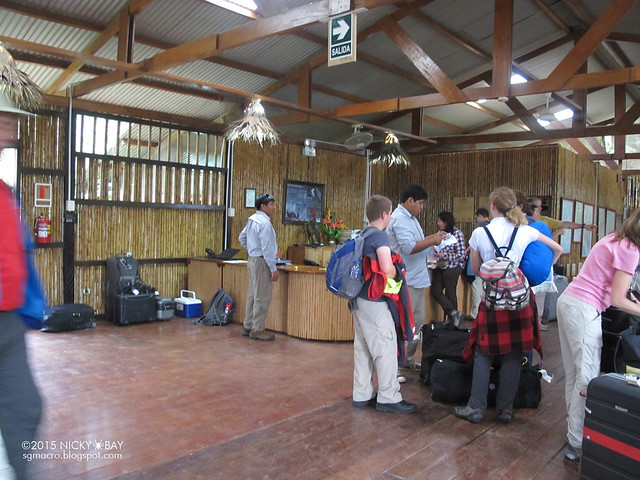
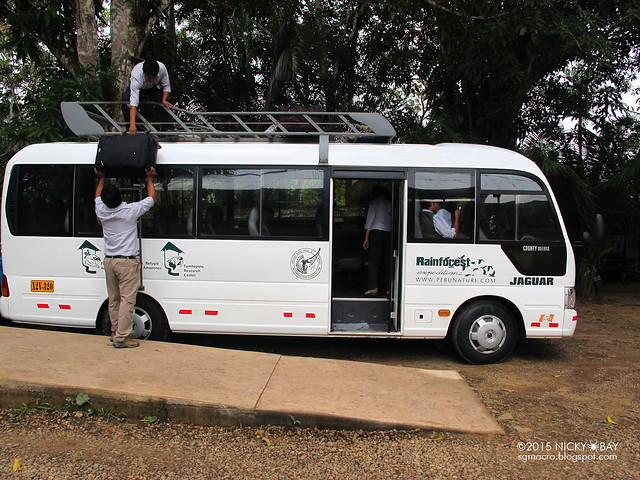
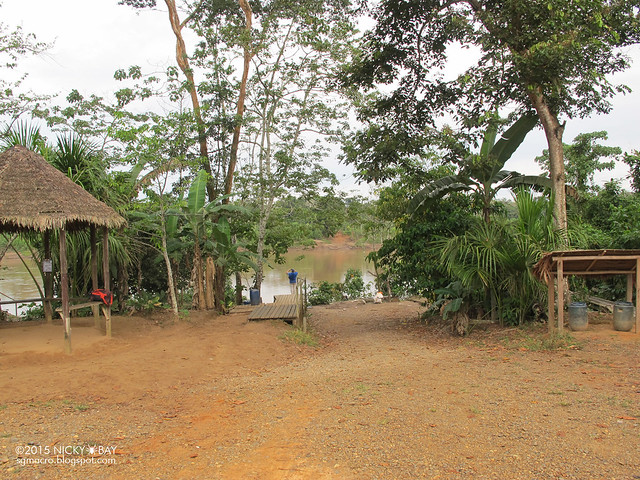
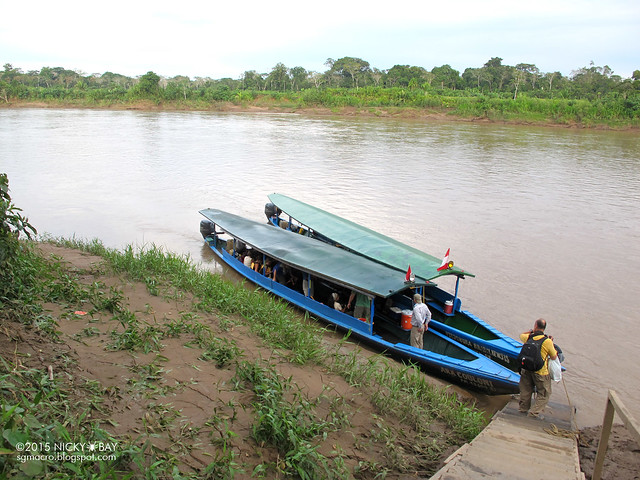
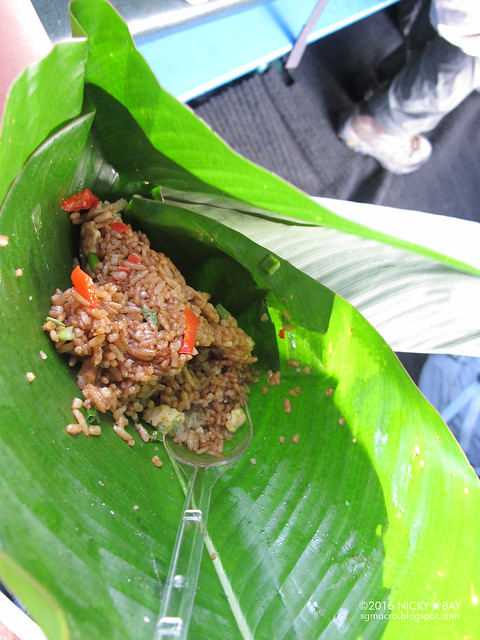
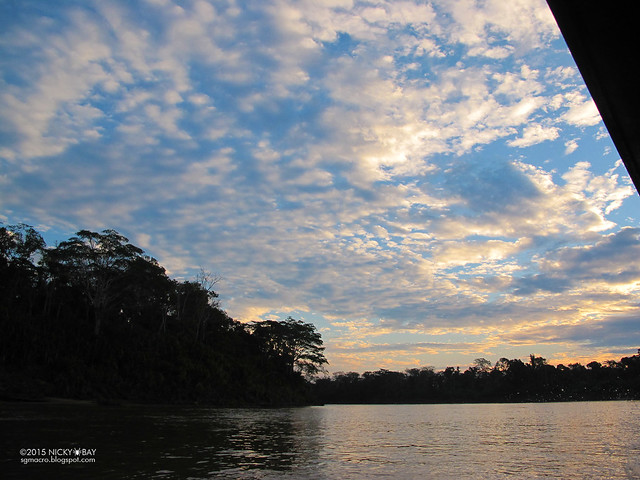
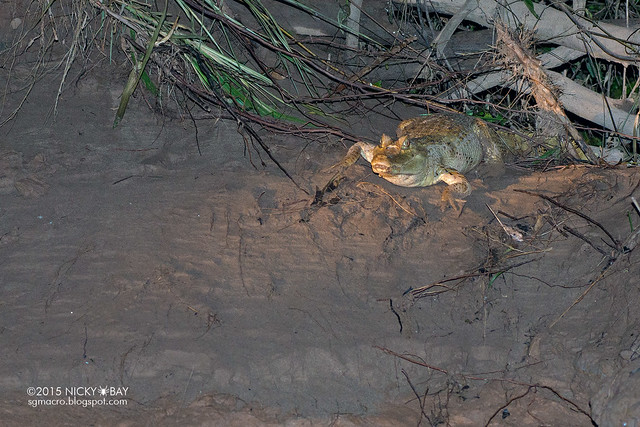
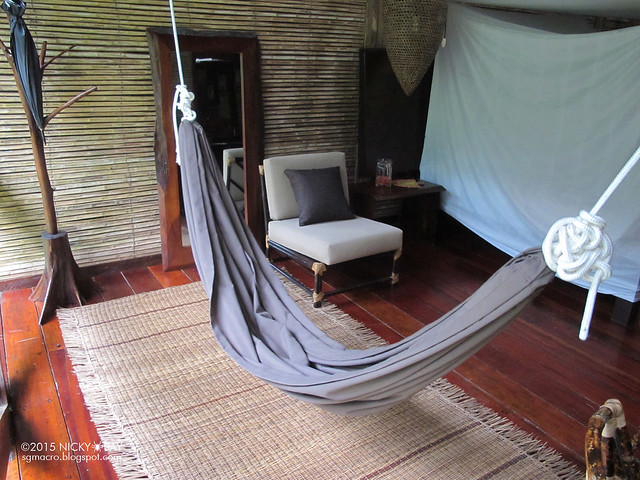
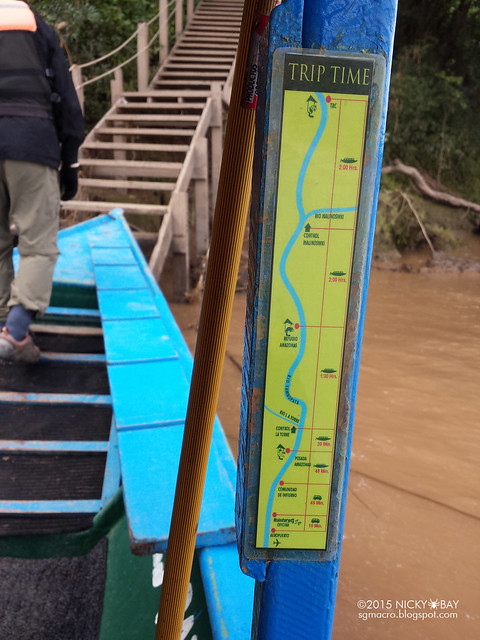

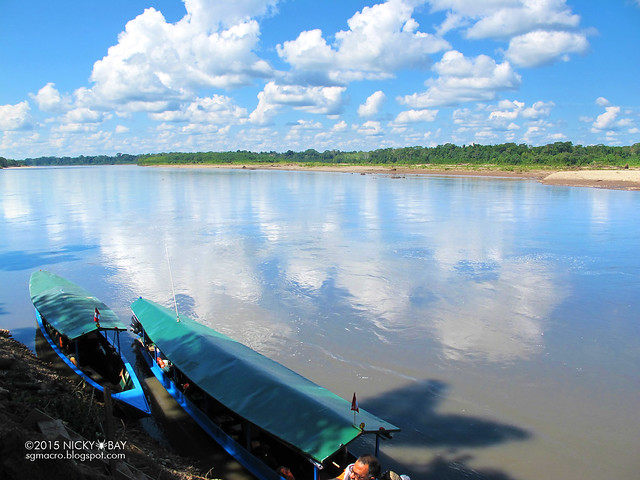
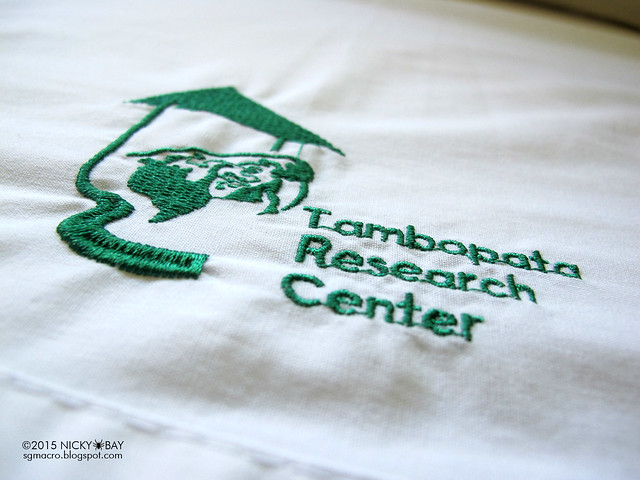

I will be including more details on the lodges in my subsequent posts on this trip. If you are curious to find out more, please let me know what information you wish to have included in my future posts in the comments section below! Do also check out my previous post on the Adorable Tortoise Orb Weavers from the Amazon.
Thanks again to Rainforest Expeditions for making this trip possible, and my trekking companions Jeff Cremer and Vico Moscoso for enduring the really slow walks with me!
I have over 50 shortlisted shots of the various Micrathena spotted on this trip. You may view the full Micrathena Flickr album for more thorny goodness!
More from the Peruvian Amazon
- Tortoise Orb Weavers
- Thorn Orb Weavers
- Roly Poly Orb Weavers
- Jewel Caterpillar
- Spider Faces
- 50 Tiny Creatures

